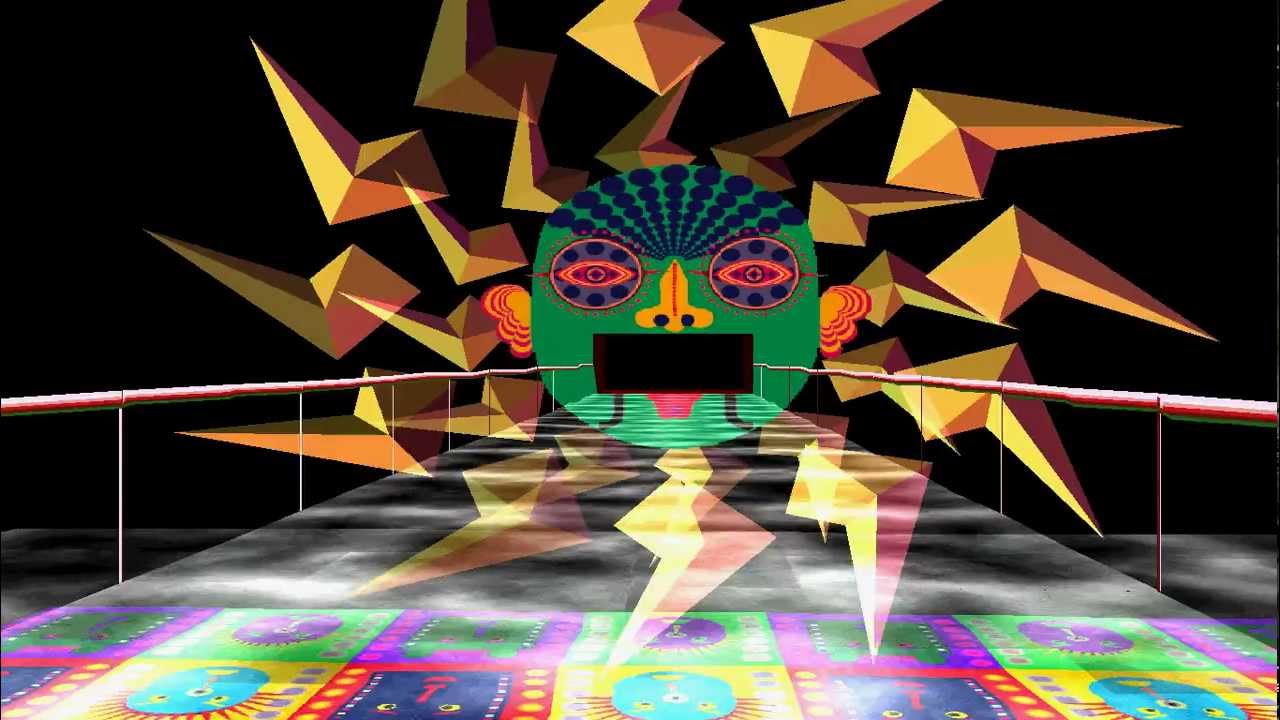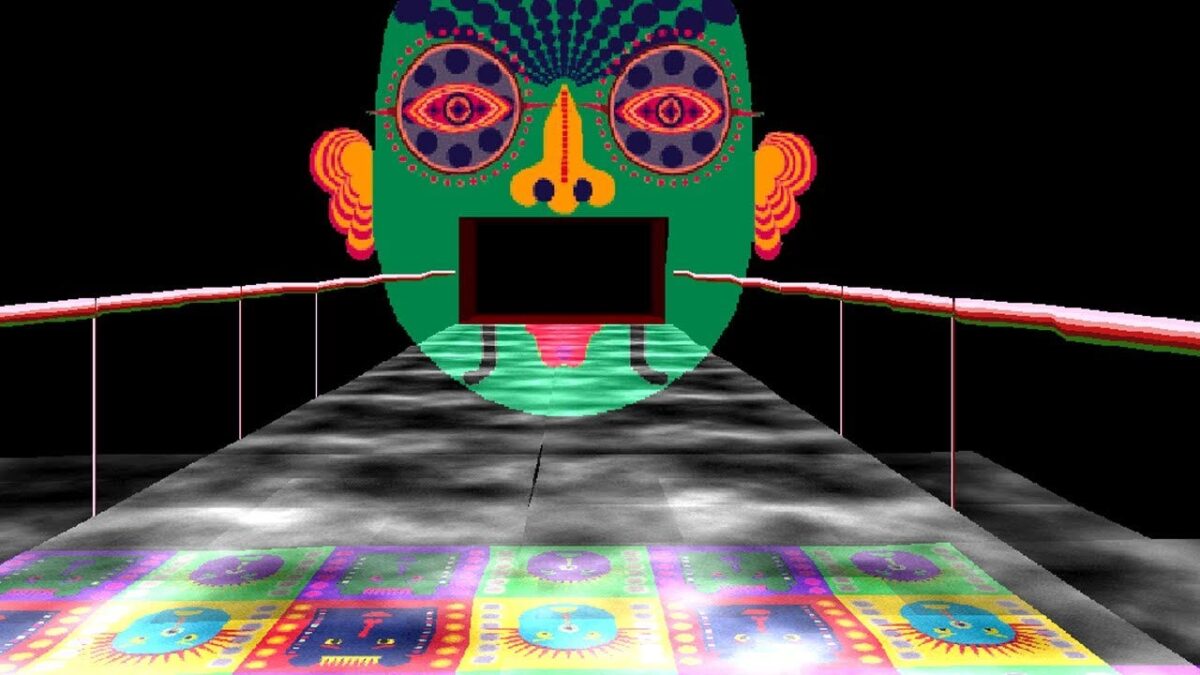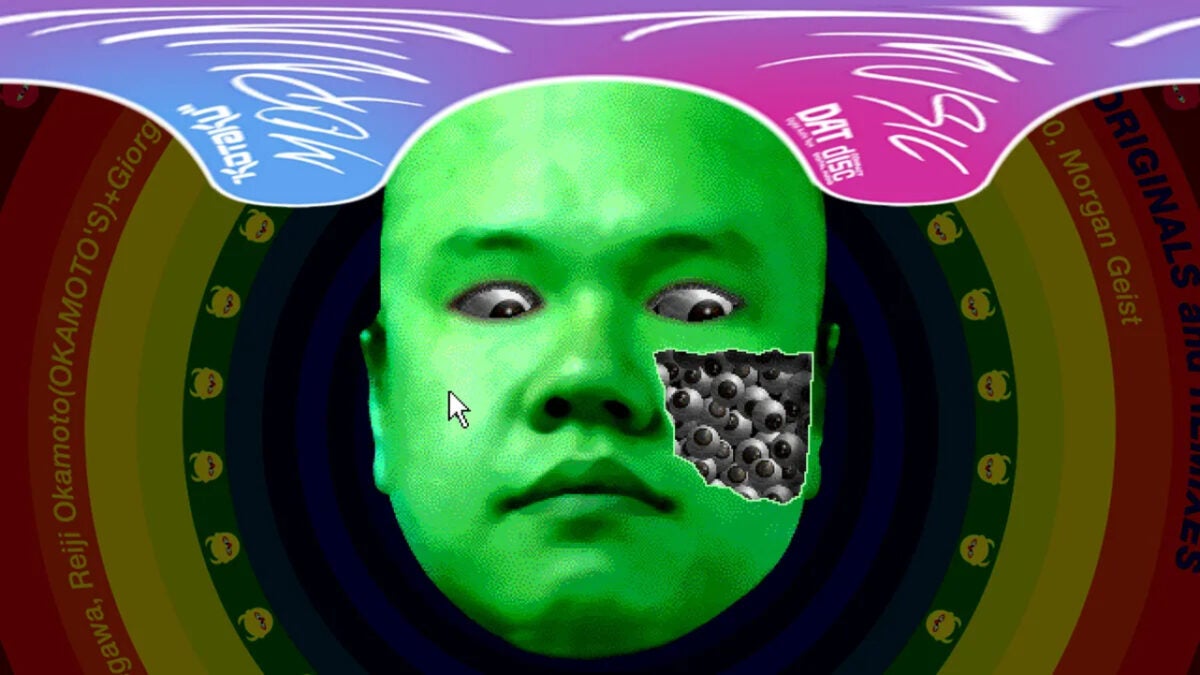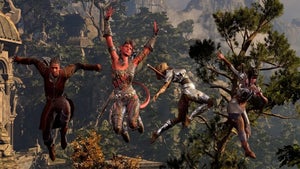The psychedelic PlayStation video game that was actually an artistic project that no one understood
Also, on the other hand, what were you expecting from a game called LSD?

- April 11, 2025
- Updated: April 11, 2025 at 8:34 AM

You finish a game. And while the credits roll, you can’t stop thinking “What did I just see?”. Has that happened to you? It’s normal: sometimes, developers have an idea so fixed in their minds that, through constant modification, it ends up being an absolute oddity. Nonsensical plots, gameplay impossible to scrutinize, screens so complex that they don’t seem to be created by any human being. Well, none, no matter how bizarre, will ever reach the level of LSD: Dream Emulator, a PlayStation game that, as its name suggests, was quite a trip.
Dreaming of little angels
To understand LSD: Dream Simulator, one must first know Osamu Sato, a 64-year-old Japanese artist who has recorded 13 albums in his lifetime – with titles like Lucy in the sky with dynamites or Multiple personality – created several art books and illustrations, exhibited worldwide, and even made various artistic video installations. A true renaissance man, indeed. But, unlike many of his contemporaries, Sato took video games very seriously.
So much so that in 1994 he created (with all the legalities: he was the director, screenwriter, producer, artist, and composer) his first title, Eastern Mind: The lost souls of Tong Nou. This graphic adventure was released for Mac and Windows, and it was about a man who had lost his soul and must find it in 49 days. Critics did not fully understand it, labeling it as “disturbing,” but it sold enough to justify a sequel the following year, Chu-Teng.

Since then, he released several niche titles for art installations until in 1998, he finally had his big opportunity: Asmik Ace, distributor of legendary games like Altered Beast, Civilization, and Shinobi, wanted to produce his next artistic work, a title for PlayStation that the creator himself rejected as a video game. Well, here we go.
Video games? On a video game console? Never!
For Sato, the PlayStation was not a place to play video games, but a means to create art and music. As it sounds. For him, both Nintendo 64 and Sega Saturn had fallen behind because they saw themselves as toy companies, while Sony had a conglomerate behind it that surely understood his intentions as an artist. Although deep down, as he has acknowledged, it was all much more prosaic: he wanted to make a game for those who, like him, were useless at playing.
LSD: Dream Emulator has no objectives of any kind, but rather it is more of a stroll through the world of dreams, so to speak. In first person, the player explores different three-dimensional scenarios for ten minutes, where you can do… Well, very little. You can observe what is there, change locations, it doesn’t matter: after the stipulated time period, the character wakes up, and there are only two ways for that to happen earlier: dying or interacting with certain objects. Exciting, huh?
The thing is, little by little, the game becomes more and more psychedelic, as the textures change, backgrounds are added, and you can travel to other dreams you have had. An absolute madness that makes it impossible not to come away thinking either that the art is alive, or that you would have enjoyed God of War more. Unsurprisingly, LSD was an absolute failure in Japan, it didn’t even get released in the United States (to the dismay of its creator, who intended for it to be released alongside Eastern Mind) and faded into obscurity. Well, more or less: Sato has released some albums with its soundtrack, for which he created over 500 arrangements, and it remains in the history of the very few hallucinogenic games that have been created.

LSD was unpredictable, strange, impossible, and at the same time ahead of its time: it may not have been so normal in 1998 to have a “walking” game, much less in such a rarefied environment, but nowadays it would be embraced as a top-tier indie. For his part, the author released two more games for PlayStation, Tokyo Planet Planetokio (1999), which was indeed a title with boss battles and more in the old-fashioned way, and Rhythm N Face (2000), where players had to create faces with tiles in a Tangram style to the rhythm of the music. After that, Sato focused on his own projects and to this day he continues to create, although it doesn’t seem like we’ll see him working on PS5 anytime soon. Old artists never die.
Editor specializing in pop culture who writes for websites, magazines, books, social networks, scripts, notebooks and napkins if there are no other places to write for you.
Latest from Randy Meeks
You may also like

Disney Dreamlight Valley will reach Wonderland with its next update
Read more

Patch 8 of Baldur's Gate 3 now has a release date and this is everything you need to know
Read more

Bungie confirms that Marathon will not be a free-to-play game
Read more

This 72-year-old retiree had the best unimaginable prescription: playing Pokémon GO
Read more

A leak reveals a lot of information about the new Call of Duty
Read more

Overwatch 2 introduces its new seven versus seven game mode
Read more